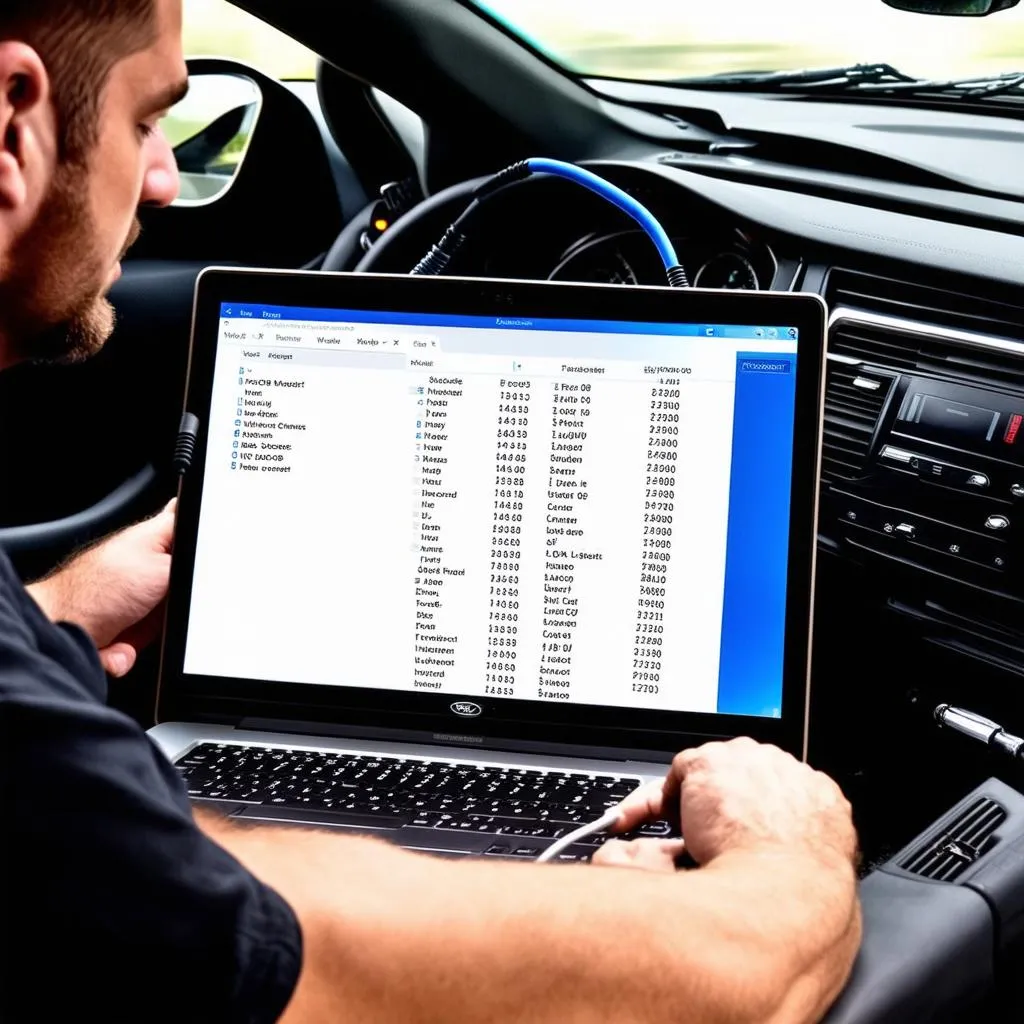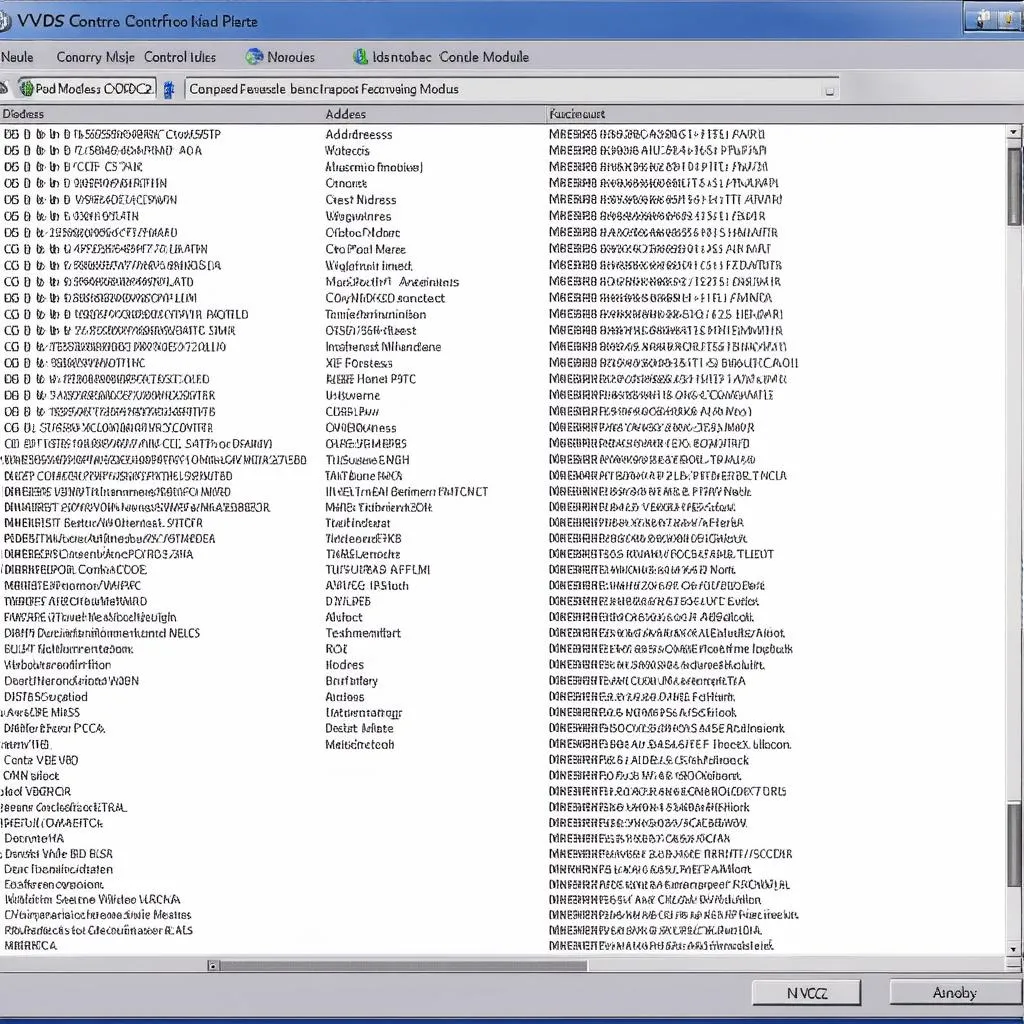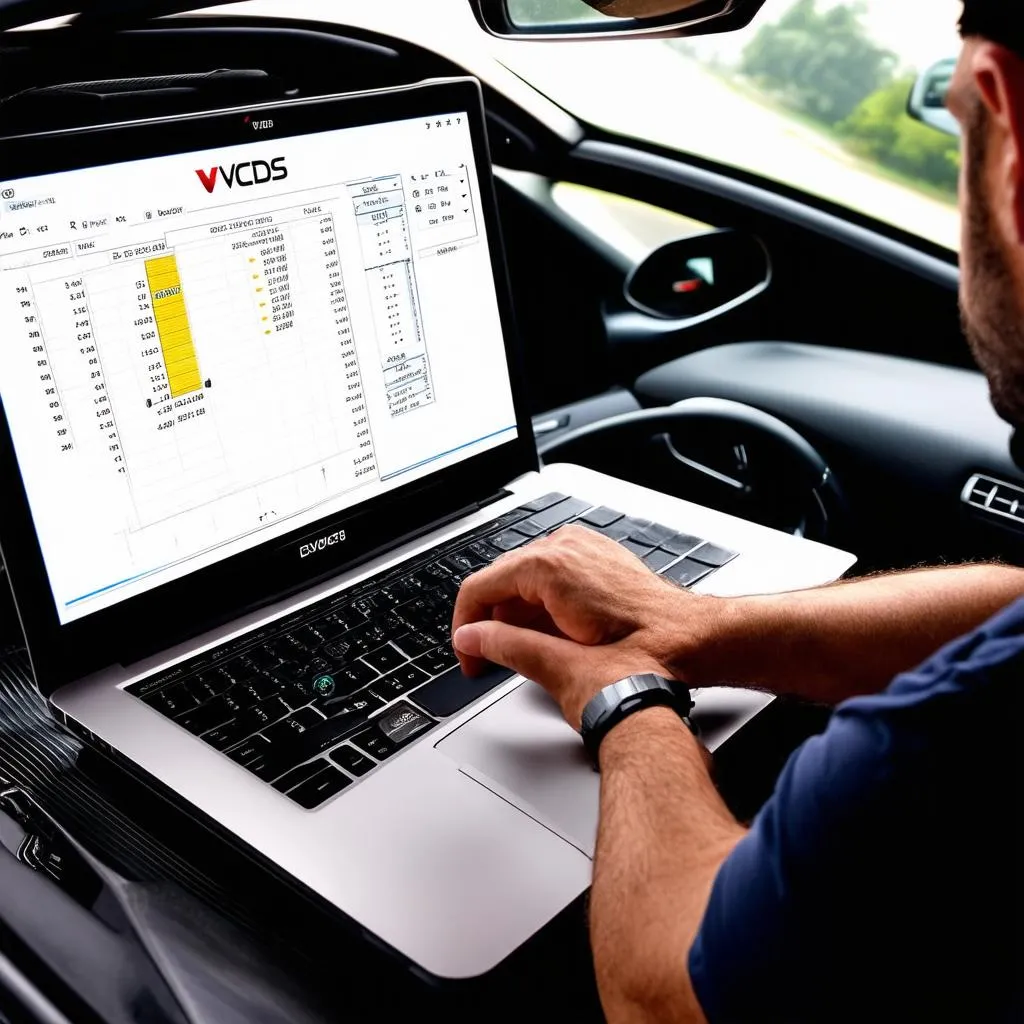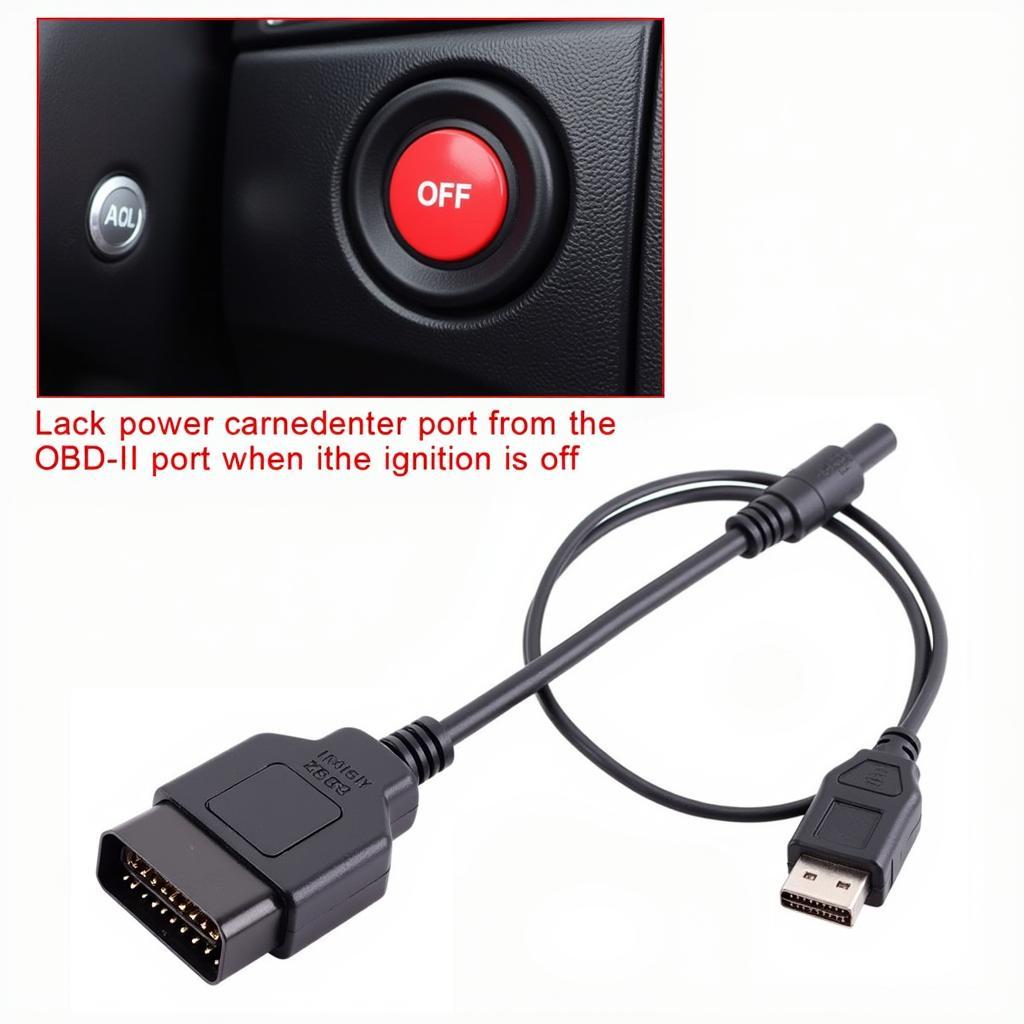In the world of automotive repair and maintenance, having the right tools can make all the difference. This is where the VCDS (Vag-Com Diagnostic System) comes into play, offering a powerful interface to communicate with your vehicle’s control modules. But what exactly is a “VCDS control module,” and how does it impact your diagnostic capabilities?
Decoding the Term: VCDS Control Module
A VCDS control module isn’t a physical component but rather a term used to describe the individual electronic units within your vehicle that the VCDS software interacts with. These modules, also known as ECUs (Electronic Control Units), are responsible for managing various systems, from engine control and transmission to airbags and convenience features.
Think of your car as a network, and the control modules are like individual hubs responsible for specific functions. The VCDS acts as your key, allowing you to access, read, and even modify data within these modules to diagnose and resolve issues.
The Power of VCDS: More Than Just Diagnostics
While the term “VCDS control module” might initially seem technical, its implications are far-reaching for anyone who wants to understand their car better. Here’s how VCDS empowers you:
- In-depth Diagnostics: Go beyond generic OBD-II scanners. VCDS provides detailed fault codes, live data streams, and advanced measurement blocks specific to your vehicle’s make and model.
- Customization & Coding: Want to tweak your car’s settings? VCDS lets you access hidden features, adjust comfort settings, and even enable specific functionalities within your control modules.
- Maintenance & Troubleshooting: From resetting service reminders to performing adaptations after replacing components, VCDS streamlines various maintenance tasks.
Common VCDS Control Module Queries Answered:
Here are some frequent questions users have about VCDS control modules:
Q1: Can I damage my car using VCDS?
While VCDS offers powerful capabilities, it’s crucial to use it responsibly. Always double-check coding changes and consult reliable sources before making modifications. Accidental alterations to critical control module settings could potentially lead to vehicle malfunctions.
Q2: What are some common control modules accessed with VCDS?
Some frequently accessed modules include:
- Engine Control Module (ECM): Manages engine performance, emissions, and fuel delivery.
- Transmission Control Module (TCM): Controls gear shifting, torque converter lockup, and other transmission functions.
- Airbag Control Module (ACM): Monitors impact sensors and deploys airbags in the event of a collision.
- Convenience System Central Control Module: Handles features like central locking, power windows, and interior lighting.
Q3: How do I know which control modules are in my car?
The VCDS software automatically identifies the compatible control modules present in your vehicle when you connect it.
 VCDS Scanning
VCDS Scanning
Expanding Your VCDS Horizons
For those looking to delve deeper into VCDS capabilities, here are some valuable resources:
- Cardiagtech: A reputable provider of automotive diagnostic tools and information. Explore their website for insights on VCDS navigation coding, graph interpretation, and more. [Link to relevant Cardiagtech article]
 VCDS Control Module List
VCDS Control Module List
- VCDS User Forums: Connect with a community of VCDS users to share knowledge, troubleshoot issues, and gain insights from experienced members.
Conclusion: Embrace the Power of Control
Understanding “VCDS control modules” is key to unlocking the full potential of this versatile diagnostic system. Whether you’re a seasoned mechanic or an enthusiastic car owner, VCDS empowers you to delve deeper into your vehicle’s inner workings, perform advanced diagnostics, and make informed maintenance decisions. Connect with CARDIAGTECH to explore their range of diagnostic solutions and enhance your automotive expertise today.


